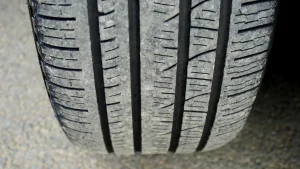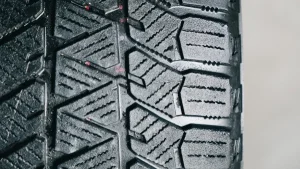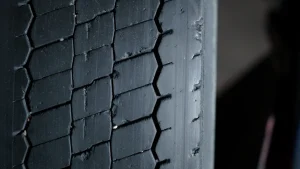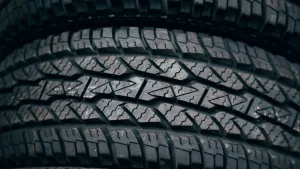When you choose a tire tread depth scanner, focus on accuracy and how easy it is to use. Did you know that about 35% of car crashes from defects are because of tire problems? Many of these are from bad tire tread depth. If you drive a lot or have many cars, you need a scanner that gives clear results. It should help you find unsafe tread. Think about what kind of car you have. Also, think about how often you will use the scanner and how much money you want to spend. The right tire tread depth scanner helps you make good choices. It also keeps you safer when you drive.
Statistic Description | Percentage / Detail |
|---|---|
Tire problems within vehicle defect-related crashes | About 35% |
Association of improper tread depth | Linked to major injury crashes and tire blowouts |
Key Takeaways
Pick a tire tread depth scanner that gives correct readings. This helps you stay safe when you drive.
Find scanners that are simple to use. They should have clear screens and easy buttons. You can check your tires fast and feel sure about it.
Choose a scanner that works with all your tire types. It should fit every size. This saves you time and gives you right results each time.
Get a scanner that is tough and does not break easily. It should resist water and have a strong warranty. This makes sure it lasts for daily use.
Look for scanners with helpful features. These include real-time data, automatic groove finding, and easy ways to share reports. This gives you the best value.
Accuracy
When you pick a tire tread depth scanner, accuracy should be your top concern. If your scanner gives you the wrong numbers, you might think your tires are safe when they are not. Let’s break down what makes a scanner accurate and why it matters for your safety.
Resolution
Resolution tells you how small a change in tread depth your scanner can detect. A high-resolution scanner can spot even tiny differences in the tread. This helps you catch early signs of uneven wear or damage. Many modern scanners use laser imaging or structured-light algorithms. These can measure tread depth changes as small as 0.1 mm. That’s much better than most manual tools.
Tip: A high-resolution tire tread depth scanner helps you find problems before they get worse. This means you can fix issues early and avoid bigger repairs or accidents.
Error Margin
Error margin is the amount your scanner’s reading might be off. You want this number to be as low as possible. Laser-based scanners usually have a much lower error margin than manual tools. Manual depth gauges can give random results because of how you hold them or how much you press down. Sometimes, the rubber compresses under the probe, which changes the reading. Laser scanners avoid these problems because they do not touch the tire. They focus on the top of the tread and ignore grooves or pores that can confuse manual tools.
Here’s a quick comparison:
Feature | Manual Gauge | Laser Imaging Scanner |
|---|---|---|
Measurement Accuracy | Low, can vary | High, up to 0.1 mm |
Error Margin | High, user-dependent | Very low, consistent |
Speed | Slow, manual | Fast, automatic |
Data Recording | Manual, easy to miss | Auto-saved, detailed |
Reliable Readings
You want your tire tread depth scanner to give you the same result every time. This is called repeatability. Laser scanners shine here. They use non-contact sensors and can scan the whole tread quickly. This means you get a full picture of your tire’s condition, not just one spot. Manual tools can miss uneven wear because they only check one place at a time.
To get the most reliable readings, experts suggest you:
Check multiple spots around the tire, not just one.
Use simple tests like the penny test, but remember these are just quick checks.
For best results, use a scanner that can measure all grooves and ribs.
Look for scanners that give you a clear report, showing safe, caution, or critical zones.
Regularly inspect your tires to catch problems early.
Note: If you see different tread depths in different spots, your tire might have alignment or inflation problems. A good scanner helps you spot these issues fast.
Laser-based scanners also create a full wear profile. They can show you if your tire has uneven wear on the inside, outside, or center. This helps you know if you need a wheel alignment or if your tire pressure is off. Manual tools cannot do this as well.
Modern tire tread depth scanners often come with features like automatic groove recognition and real-time data display. Some even connect to your phone or tablet, making it easy to save and share inspection reports. These features make your inspection faster and more accurate.
In short, if you want the best accuracy, choose a tire tread depth scanner with high resolution, low error margin, and reliable readings. Laser imaging scanners are the top choice for most drivers, technicians, and auto shops.
Ease of Use
User Interface
A good tire tread depth scanner should feel easy to use from the start. You want a user interface that makes sense, even if you have never used a scanner before. Many users say that a simple, friendly interface helps them learn faster and work more efficiently. You do not want to waste time figuring out confusing menus or buttons.
Intuitive menus guide you step by step through the scanning process.
Wireless connectivity, like Bluetooth or Wi-Fi, lets you pair the scanner with your phone or tablet in seconds.
Mobile apps often support both Android and iOS, so you can use your favorite device.
AI-powered scanning with your smartphone camera makes things even easier. Just point and scan—no special hardware needed.
Digital recording and sharing of tire data save you from writing things down by hand.
If you work in a shop or manage a fleet, you will appreciate features like cloud storage and instant report sharing. These tools help you keep track of every inspection and make your job smoother.
Display
The display is where you see your results. A clear, bright screen makes a big difference. Most modern scanners use digital touch screens. These show real-time numbers, color bar charts, and even icons for battery or wireless status. You can spot problems at a glance.
Real-time numeric readouts show you the exact tread depth.
Color-coded charts highlight safe, caution, or danger zones.
Status icons tell you if your battery is low or if Bluetooth is connected.
Some scanners let you view detailed inspection reports right on the device. Others send the data to your phone or tablet, where you can see full-color 3D images and maintenance advice. This makes it easy to understand what your tires need.
Operation
You want a scanner that works fast and does not require a lot of steps. The best devices keep things simple. Here’s how the operation usually looks:
Step | What You Do |
|---|---|
Pair the scanner with your phone or open the app. | |
Scanning | Place the scanner on the tire or point your phone camera at the tread. |
Guidance | Follow on-screen prompts or app instructions for each tire. |
Results | View instant, color-coded results and warnings. |
Data Management | Save, share, or print reports with just a tap. |
Some scanners use a laser imaging algorithm for non-contact scanning. This means you do not have to press down or worry about getting your hands dirty. Automatic groove recognition finds the right spots to measure, so you get accurate results every time. You can use these scanners alone or pair them with your phone for more detailed reports. This flexibility helps both car owners and professionals get the job done quickly and confidently.
Tire Tread Depth Scanner Features
Real-Time Data
You want to see results right away when checking tires. A modern tire tread depth scanner shows real-time data on its screen. Devices like the Autel MaxiTPMS TBE200 have a 1.65-inch AMOLED display. You can watch the measurement curve as you scan the tire. The tread depth changes as you move the scanner. This helps you find tire wear and tread problems quickly. You do not need to take off the tire or wait for a report. The scanner uses laser imaging for scanning without touching the tire. This gives you accurate numbers every time. You press the power button, point the laser at the tread, and see results appear. The device has a USB Type-C charging port and Bluetooth/Wi-Fi for easy connection.
Tip: Real-time data helps you spot uneven tread wear early. You can fix problems fast and keep your car safe.
Wear Analysis
A good scanner does more than measure tread depth. It checks tire wear in detail. You can look at the outer, center, and inner parts of each tire. The scanner uses automatic groove recognition to find the right places. You get a full view of your tire’s health. The table below shows what advanced scanners can do:
Feature/Analysis Type | Description |
|---|---|
Single Tread Depth Check | Measures tread depth at the center area of each tire. |
Full Tread Depth Check | Measures tread depth in outer, center, and inner areas for detailed analysis. |
Uneven Wear Analysis | Detects patterns like abnormal pressure or alignment faults. |
Brake Disc Wear Measurement | Measures brake disc surface wear without removing tires. |
Tire Condition Status | Shows if your tire is normal, worn, or bulging. |
Replacement & Maintenance Tips | Gives advice for tire replacement, rotation, and alignment. |
Accuracy | Laser measurement within 0.1mm, confirmed by field tests. |
You can use the scanner by itself or with your phone or tablet. The mobile app shows color charts and gives you reports. This helps technicians, car owners, and fleet managers make smart choices. The scanner works with almost every tire type. It supports passenger cars, trucks, motorcycles, and off-road vehicles. It also works with Summer, Winter, and All Season tires.
Replacement Suggestions
You should not guess when to replace your tires. The scanner gives clear alerts for replacement. It checks for over-inflation, under-inflation, wheel alignment, and tread wear. If your tire is unsafe, the scanner tells you right away. You get tips for rotation and alignment. Some scanners, like the drive-over tire reader, scan tires as you drive over them. This makes fleet checks very fast. You can link tire data to your vehicle’s VIN or license plate for easy tracking. Mobile app integration, like Anyline’s TireBuddy, makes sharing reports simple. You get instant advice and can schedule maintenance easily.
Note: Using a drive-over tire reader or a handheld scanner with app support saves time and reduces mistakes. You get digital records and useful tips for every tire.
Compatibility
When you pick a tire tread depth scanner, make sure it works with your tires. Not all scanners can check every tire type or size. You need a scanner that gives good results for any car you drive.
Tire Types
You might drive a sedan, SUV, truck, or motorcycle. Each tire has its own tread pattern and build. Some scanners only work well with regular car tires. Others can scan truck or off-road tires too. Handheld scanners with laser imaging and automatic groove recognition work on many tire types. They find the right grooves and measure tread depth without touching the tire. Mobile tire tread scanners use AI to scan bigger areas, so they fit more tire types. You can use them for summer, winter, or all-season tires.
Tip: If you have different vehicles, choose a scanner that works with all tire types. This helps you save time and money.
Tire Sizes
Tire size is important when checking tread depth. Big trucks and small cars have different tire widths and heights. Some scanners, like drive-over models, need lots of space and may not fit every tire size. Large scanning machines can scan many tires at once, but they are big and cost a lot. Handheld scanners are easy to carry and work with most tire sizes, but you scan one tire at a time. Mobile app-based scanners are flexible because their software can handle many tire sizes.
Here’s a quick look at how different scanners work with tire sizes:
Scanner Type | How It Fits Different Tire Sizes | Common Limits |
|---|---|---|
Drive-over Scanner | Car drives over; not very flexible with size | Needs space; not easy to move; costs a lot |
Large Scanning Machines | Scans many tires stacked; not very flexible with size | Expensive; needs lots of space; single-use |
Easy to carry; fits most tire sizes | One tire at a time; can be expensive | |
Mobile Tire Tread Scanner | AI changes for many sizes; very flexible | Needs some training; some cost, but cheaper |
Pick a scanner that works with your tire size and type. Mobile and handheld scanners are the most flexible. They are good for car owners, shops, and technicians. You get quick, correct tread readings and easy-to-read reports.
Durability
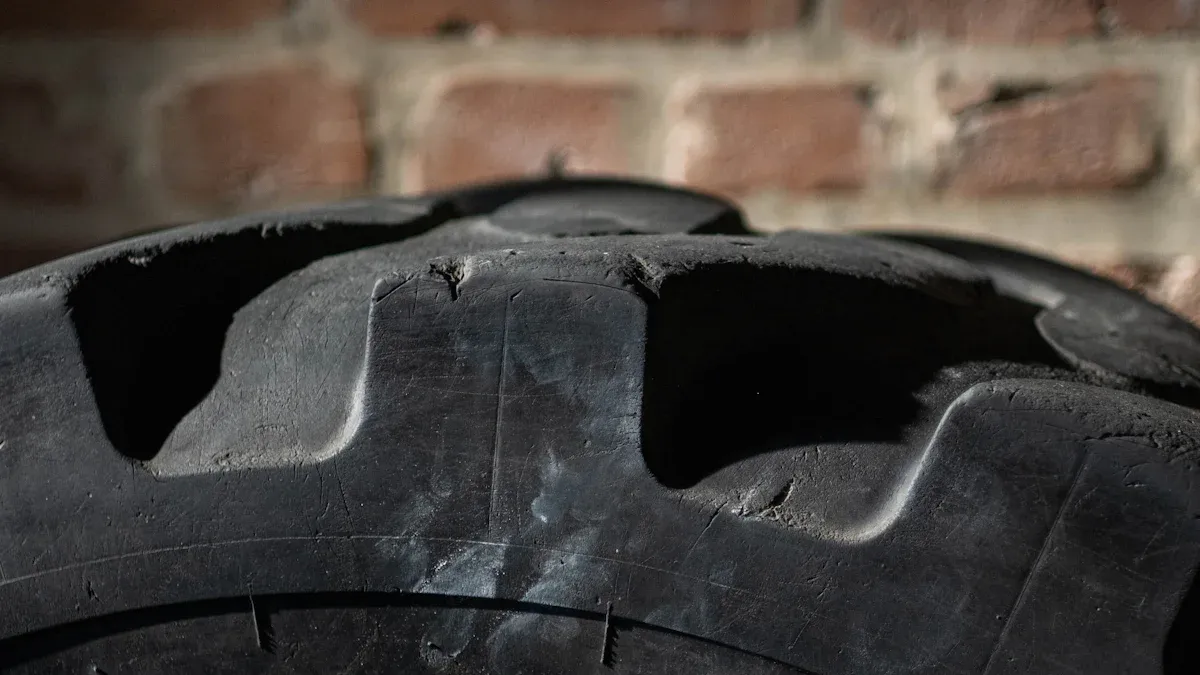
When you pick a tire tread depth scanner, you want it to last. You might use it in your garage, outside in the rain, or even at a busy shop. A tough scanner keeps working, no matter where you use it.
Build Quality
A strong build means your scanner can handle drops, bumps, and daily use. Look for a device with a sturdy case and good buttons. Many scanners use hard plastic or metal for extra strength. Some even have rubber edges to protect against falls. If you work in a shop or check your tire condition often, you need a scanner that feels solid in your hand. A well-built scanner also keeps dust and dirt out, so it works longer without problems.
Sturdy case protects the inside parts.
Rubber edges help absorb shocks.
Tight seals keep out dust and dirt.
Water Resistance
You might need to check your tires after rain or in a wet shop. Water resistance helps your scanner keep working, even when things get messy. Many digital depth gauges come with an IP rating. This rating shows how well the device stands up to water and dust. For example, some popular models have an IP67 rating, which means they can handle being dropped in water for a short time. Others, like the CSDC150, have an IP54 rating, which protects against splashes.
Product Name | Water Resistance Rating (IP) | Notes |
|---|---|---|
Digital Depth Gauge 1432010 | IP67 | Wireless, high water and dust resistance |
Digital Depth Gauge 30 EWR | IP67 | High protection, various interfaces |
Digital Depth Gauge CSDC150 | IP54 | Moderate protection against dust and water splashes |
Digital Depth Gauge 0053044 | IP67 | Wireless, high water and dust resistance |
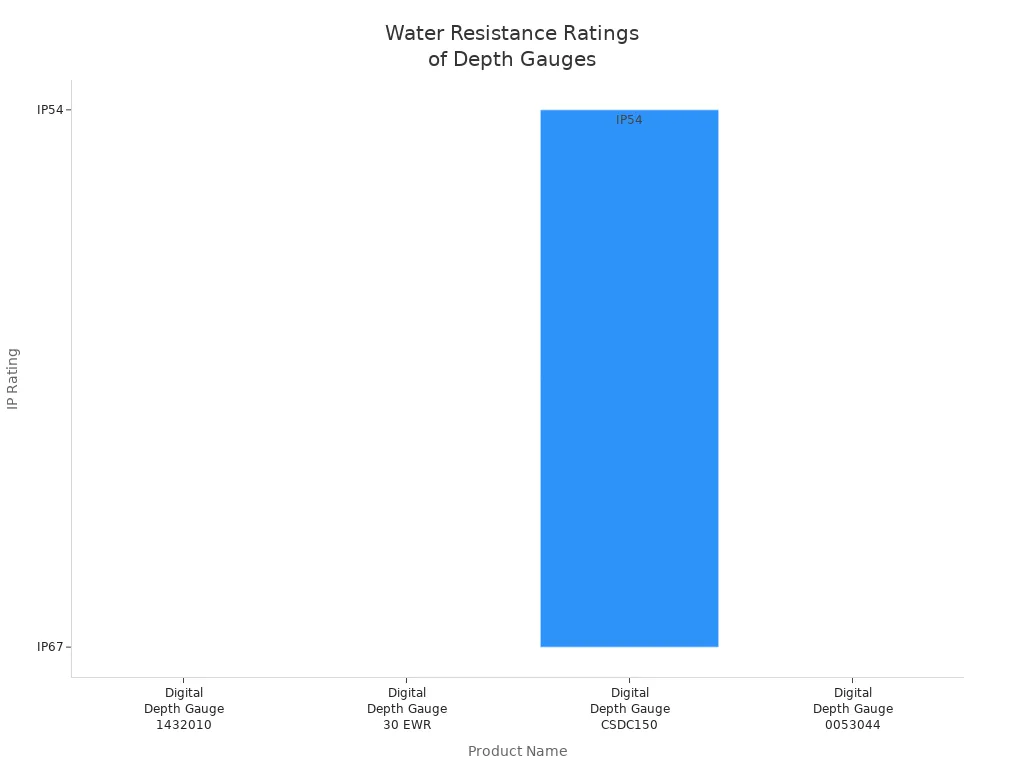
Tip: If you often check tires outdoors or in wet places, pick a scanner with a high IP rating. It will last longer and give you reliable results.
Warranty
A good warranty gives you peace of mind. Most tire tread depth scanners come with a parts warranty of about one year. Some brands, like Coats, offer up to three years for certain models. Labor and on-site service usually last six months or less. If you use your scanner a lot, a longer warranty can save you money on repairs.
Product Category | Parts Warranty Period | Labor & On-Site Warranty Period |
|---|---|---|
APS Series Tire Changers, 9028 Tire Changer | 1 year | 6 months |
X Series, APX Series, Maxx Series (2023), 80C/90C Tire Changers | 3 years | 6 months |
RC Series Rim Clamp Tire Changers | 1 year | 6 months |
All Heavy Duty Tire Changers | 1 year | 90 days |
Tire Changer and Inflation Accessories | 1 year | No labor warranty |
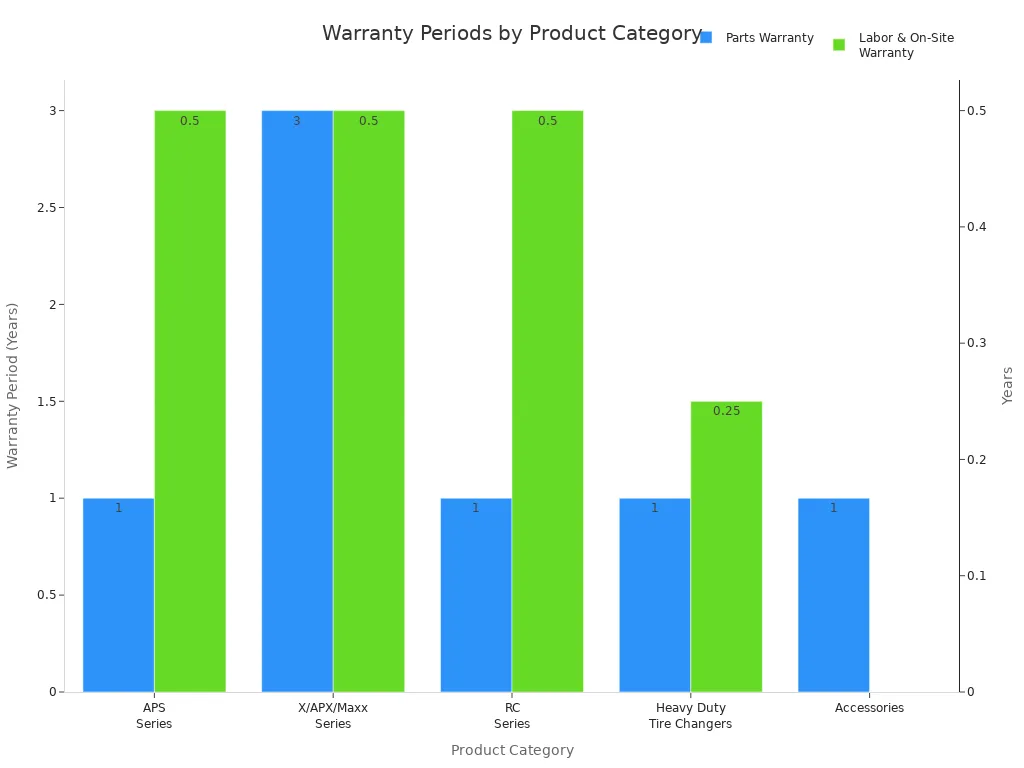
Note: Always check the warranty before you buy. A strong warranty means the company trusts its product and will help you if something goes wrong.
Price and Value
Essential Features
When you buy a tire tread depth scanner, you want good value. Focus on the features that matter most. You need high accuracy, easy use, and results you can trust. Scanners with laser imaging or structured-light algorithms are best. These scanners measure tread depth very precisely, down to 0.1 mm. Automatic groove recognition helps you check the whole tire fast.
A good scanner should have a clear touch screen. You should see numbers and color charts right away. Status icons show battery, Bluetooth, and Wi-Fi. USB Type-C charging keeps your scanner ready to use. Bluetooth and Wi-Fi let you connect to your phone or tablet. You can save and share reports easily.
Here is a checklist of important features:
Laser imaging for accurate results
Non-contact scanning keeps your hands clean
Automatic groove recognition for full tire checks
Touch screen with color display
USB Type-C charging port
Bluetooth/Wi-Fi for easy connection
Real-time numbers on the screen
Professional reports for inspections
Tip: If you work in a shop or manage many cars, these features save time and help keep vehicles safe.
Upsells
Some brands sell extra features for more money. You might see rain-environment modes, special design patents, or advanced app features. These extras help if you need special reports or want to link your scanner to a customer system.
Here is a table to compare upsell features:
Upsell Feature | What You Get | Who Needs It |
|---|---|---|
Rain-environment mode | Accurate scans in wet conditions | Outdoor users |
Advanced app integration | Report management and analysis | Fleet managers |
Extended warranty | Longer protection for your device | Heavy users |
Proprietary algorithms | Better repeatability and accuracy | Professionals |
Think about what you need before paying for extras. If you only want simple tread checks, you may not need every add-on. If you run a busy shop, advanced features can help you work faster.
Note: Always check what comes with the scanner and what costs more. The best value is a scanner that fits your needs and budget.
Reviews and Reputation
User Feedback
When you look for a tire tread depth scanner, you want to know what other users think. Real feedback helps you spot the best features and possible problems. Many people praise top-rated scanners for their accuracy. You can measure tread depth from 0 to 1 inch in 1/32 inch steps. A color-coded system makes it easy to see if your tires are safe or need attention. Users love the compact design. You can clip it to your pocket and carry it anywhere. These scanners work for trucks, motorcycles, and cars. People say they get good value for their money.
Here’s what users mention most:
Accurate measurements every time
Easy-to-read color codes for safety
Small size with a handy pocket clip
Works for many vehicle types
Affordable price
Some users point out a small issue. The slide part of the gauge sometimes needs more resistance. This would make it easier to use.
Tip: Always check user reviews before you buy. You can learn about real-life pros and cons.
Expert reviews often highlight advanced models like the Autel TBE200. Experts say it gives precise results, shows real-time data, and even checks brake disc wear. You get detailed reports and service advice. However, some products like the Autel TBE200 have few consumer ratings, so you may not find many user opinions yet. Experts also recommend smartphone-based scanners like Anyline. These use AI and your phone’s camera to measure tread depth. You get instant digital reports and easy sharing. This method is simple and works for many people.
Trusted Brands
You want a scanner from a brand you can trust. Autel stands out among professionals. The Autel TBE200 model measures tread depth with high accuracy—up to 0.1mm. It checks brake rotors and gives real-time wear analysis. You can scan and store DOT numbers for recall alerts. The device saves pictures of tire damage and uploads data to the cloud. You can link reports to shop software. Autel tools work together, so you get full vehicle health reports. These features help shops work faster and keep customers safe.
Note: Trusted brands offer more than just good tools. They give you better support, more features, and peace of mind.
Picking the right tire tread depth scanner is important for your safety and money. Here are the main things to think about:
Choose a scanner that is very accurate and simple to use.
Look at the checklist to see which scanner has good features, lasts long, and comes from a trusted brand.
Checking your tires often with a good scanner helps you find problems early, avoid tickets, and keep your car working well.
Remember, checking tread depth the right way helps your car grip the road, stop better, and use less gas. These are all important for taking care of your car.
FAQ
What does a handheld tire tread depth scanner look like?
You’ll see a small device with a touch screen, power button, and USB Type-C charging port. The back side usually has a laser emitter and optical lens. Some models show battery and Bluetooth status right on the screen.
How does the scanner measure tread depth?
The scanner uses a laser imaging algorithm. It scans the tire without touching it. Automatic groove recognition finds the right spots. You get fast, accurate results every time.
Can I use the scanner with my phone or tablet?
Yes! You can pair the scanner with your phone or tablet using Bluetooth or Wi-Fi. The app lets you view reports, manage settings, and analyze tire wear. You can even share inspection results with others.
Who should use a tire tread depth scanner?
Technicians, car owners, auto shops, fleets, and inspection stations all benefit. If you want quick, reliable tire checks and easy reports, this tool is for you.
How is this better than a traditional gauge?
Feature | Mechanical Gauge | Laser Imaging Scanner |
|---|---|---|
Accuracy | Low | High (0.1 mm) |
Speed | Slow | Fast |
Report | None | Detailed, with advice |
You get faster inspections, better accuracy, and instant maintenance tips.
See Also
Step-By-Step Guide To Measuring Tire Tread Depth Correctly
Understanding Smart Tire Tread Depth Sensors And Their Function
The Importance Of Regular Tire Tread Depth Checks For Safety

